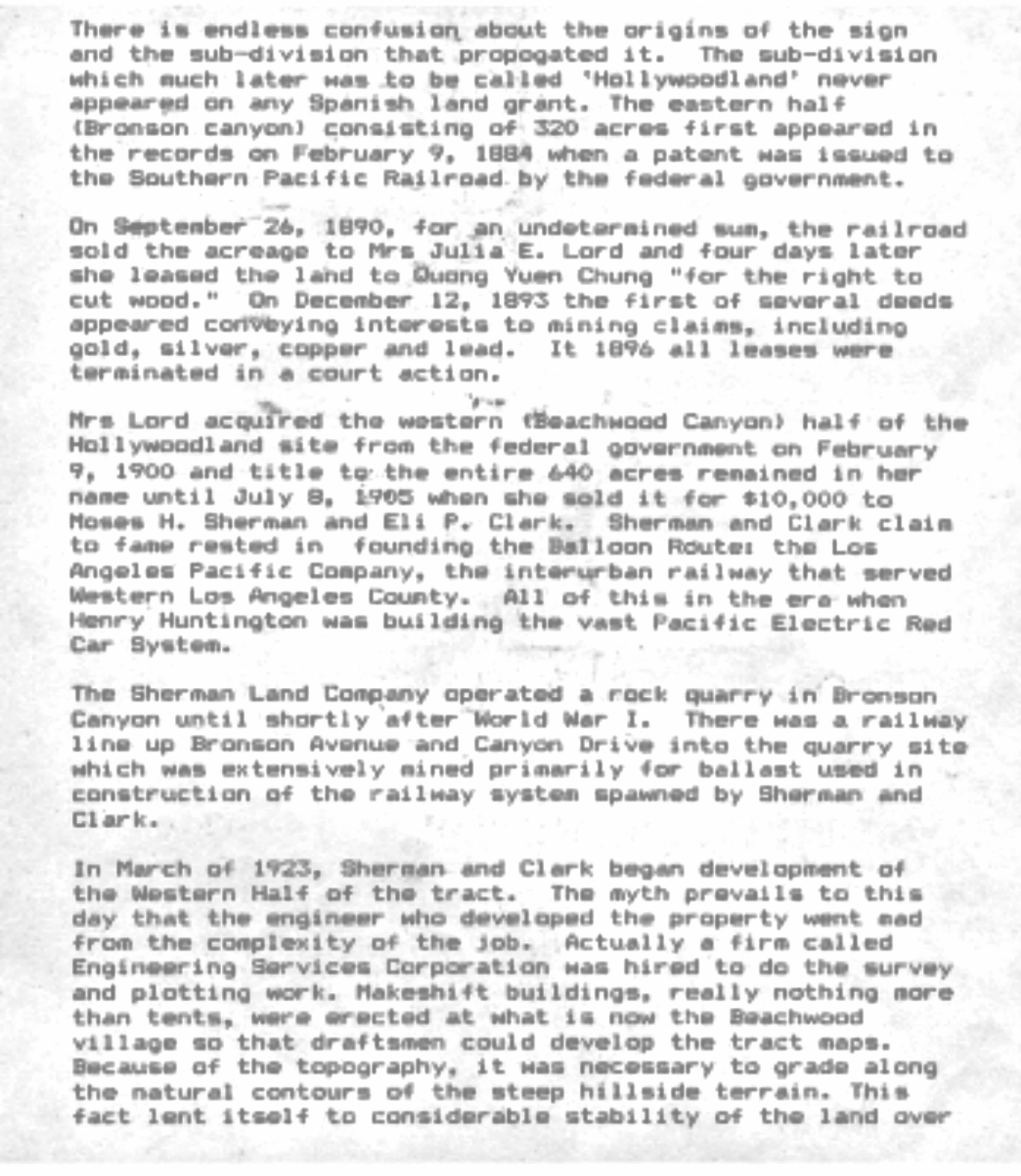By Ray Long
There is an endless confusion about the origins of the sign and the sub-division that propagated it. The sub-division which later was to be called “Hollywoodland” never appeared on any Spanish land grant. The eastern half (Bronson Canyon) consisting of 320 acres first appeared in the records on February 9, 1884 when a patent was issued to the Southern Pacific Railroad by the federal government.
On September 26, 1890, for an undetermined sum, the railroad sold the acreage to Mrs. Julia E. Lord and four days later she leased the land to Quong Yuen Chung” for the right to cut wood”. On December 12, 1893 the first of several deeds appeared conveying interests to mining claims, including gold, silver, copper and lead. In 1896 all leases were terminated in a court action.
Mrs. Lord acquired the western (Beachwood Canyon) half of the Hollywoodland site from the federal government on February 9, 1900 and title to the entire 640 acres remained in her name until July 8, 1905 when she sold it for $10,000 to Moses H. Sherman and Eli P. Clark. Sherman and Clark’s claim to fame rested in founding the Balloon Route: the Los Angeles Pacific Company, the interurban railway that served western Los Angeles County. All of this is in the era when Henry Huntington was building the vast Pacific Electric Red Car System.
The Sherman Land Company operated a rock quarry in Bronson Canyon until shortly after World War I.
There was a railway line up Bronson Avenue and Canyon Drive into the quarry site which was extensively mined primarily for ballast used in construction of the railway system spawned by Sherman and Clark.
In March of 1923, Sherman and Clark began development of the western half of the tract. The myth prevails to this day that the engineer who developed the property went mad from the complexity of the job. Actually a firm called Engineering Service Corporation was hired to do the survey and plotting work. Makeshift buildings, really nothing more than tents, were erected at what is now the Beachwood Village so the draftsmen could develop the tract maps. Because of the topography, it was necessary to grade along the natural contours of the steep hillside terrain. This fact lent itself to considerable stability of the land over time.

